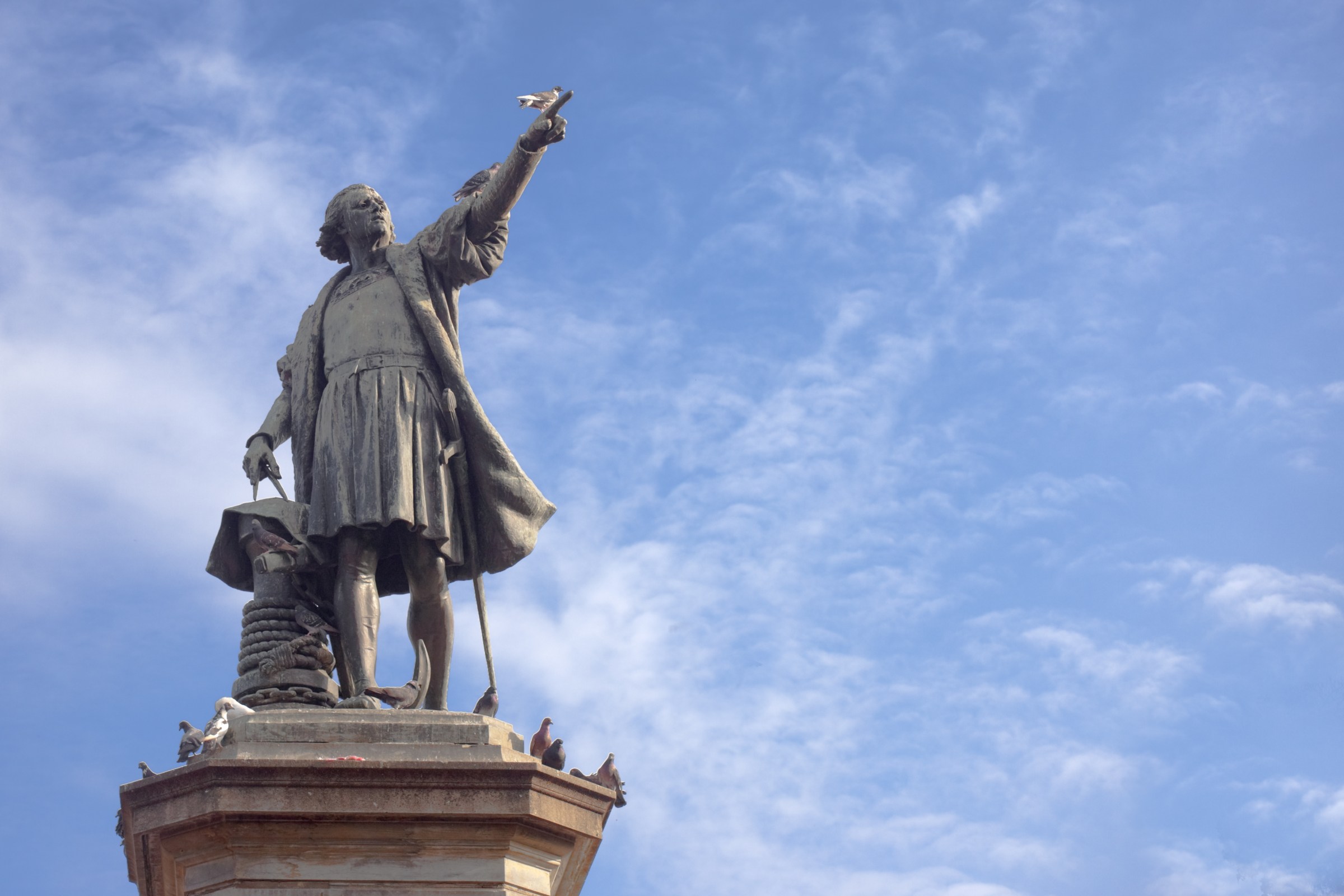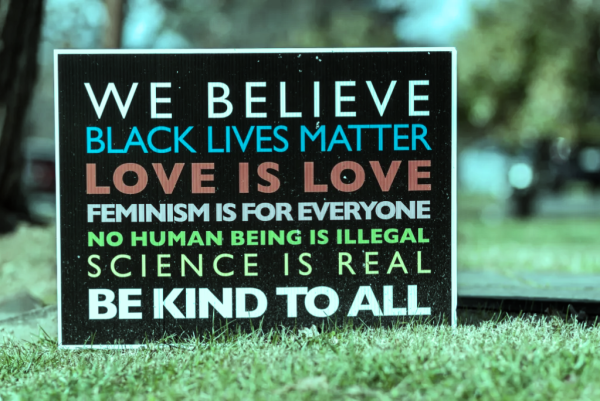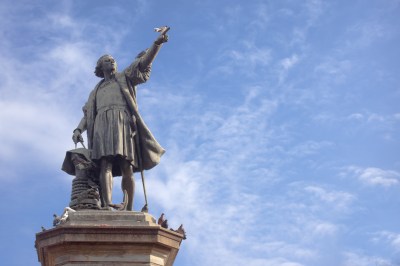To coincide with Columbus Day earlier this year, a Spanish documentary reported that the famed explorer was possibly of Sephardic Jewish ancestry, sparking a heated debate about his genetic lineage.
Many were skeptical of its claims, though. Soon after the documentary was released, scientists pointed out that the team behind it did not make the raw genetic data public for re-analysis, in keeping with standard practice. The documentary had another shortcoming: Though it showed that Columbus’ paternal and maternal lineage were compatible with Sephardic Jewish ancestry, it didn’t establish that he had clear Sephardic Jewish ancestry. To understand what this means and why it matters—to Columbus’ lineage and to our own understanding of ancestral heritage more broadly—it’s important to establish some fundamentals of genetics.
Paternal ancestry is generally traced through the Y chromosome, which holds an unbroken line connecting men to their male predecessors. Similarly, maternal ancestry passed through DNA in the mitochondria and inherited only from a mother’s egg links people to their female ancestors. These are important data. Mitochondrial DNA was the basis for the “African Eve” hypothesis that humans only recently left Africa to populate the world, while Y chromosome descent patterns point to Genghis Khan’s fecundity across much of Asia. But both of these theories relate to broad population-wide questions, not points of individual ancestry. For that, these two genetic markers—the ones the Columbus documentary relied on—are not sufficient.
In order to describe genetic makeup going back generations, scientists look for a series of patterns of variation in our DNA called haplogroups. Arranged through a combination of letters and numbers denoting different branches of genetic lineage, haplogroups can help us be much more precise when trying to determine someone’s genetic background.
To illustrate this, consider my own maternal lineage, haplogroup U2b, which is commonly found in South Asia. It tracks with my recent ancestry, which is from Bangladesh. On the other hand, my paternal lineage, R1a, is found in South Asia at about 20 percent frequency but in Poland and Russia at 40 percent to 50 percent frequency. Looking at just my paternal lineage, one could say that my lineage is “compatible” with Slavic ancestry. It is, but this assertion ignores that a single genetic data point does not capture the complexity of human population history.
When it comes to famous figures, however, media outlets often elide this complexity, and not just for Columbus. In 2010, the Israeli newspaper Haaretz reported that Adolf Hitler may have had “Jewish and African Roots.” The truth was murkier. Hitler’s paternal lineage, E1b1, is compatible with Jewish and African ancestry, just like Columbus’ J2 haplogroup is compatible with Sephardic Jewish ancestry. But if you look at a map of where in the world E1b1 is concentrated, the highest frequencies are among Somali people in the Horn of Africa. Therefore, a more accurate headline would have mentioned Hitler’s Somali heritage, not the broader “African” label.
Further complicating matters, E1b1 is widely distributed across North and East Africa, and it is found in appreciable proportions in Southern Italy, Southern Spain, and the Balkans. In Austria and Southern Germany, the frequency of E1b1 is 5 percent to 10 percent. This is far lower than the proportion in Somalia (80 percent), Egypt (40 percent), or Kosovo (45 percent). All to say that after you dig a little deeper, saying Hitler had possible Jewish and African roots is misleading. The paternal ancestry of Europeans along the Y chromosome is complicated and entangled with African populations—along the southern edge of the Mediterranean and Near Eastern ones to the east, and even with Sub-Saharan populations.
But if Y chromosomes and mitochondrial DNA only get us so far in determining an individual’s roots, are there other tools at our disposal? In short, yes: The ultimate clue to Hitler’s forefathers can be found through a combination of ancient DNA, genetic material extracted from remains, and archaeology.
Right after the end of the last Ice Age, 11,700 years ago, the Natufian culture of the Levant—stretching from present-day Israel to Syria—settled down and began to farm. Other populations likely learned farming from them or were descended from them. For this reason, archeologists view the Natufian people as essential to understanding the course of human history. More recently, geneticists have retrieved DNA from the Natufian people and confirmed that they contributed a substantial proportion of the ancestry of modern-day Middle Easterners.
When researchers looked at the Natufian’s Y chromosomes and determined their paternal lineage, they all came back to the E1b1 haplogroup. Hitler’s ancestry therefore does not have an answer in the recent past, with Jewish or African heritage, but the deep past, with the rise and spread of farming cultures during the Neolithic period. The distribution of E1b1 today can be better understood as the product of interactions between migrants and native populations over the last 10,000 years, first as farming spread across Europe resulting in the genetic imprint of people from the Eastern Mediterranean across Europe, and second as social and political transformations triggered by the arrival of Indo-Europeans from the Eurasian steppe. DNA variations are like a palimpsest of these events, and we come to understand it better as we pull back the layers in a multidisciplinary fashion, using archaeology and genetics, among other tools.
The same can be done to my DNA. My paternal lineage, R1a, is widely distributed from Scotland—clan MacDonald are all R1a—to Bangladesh. How could this come to be? Again, by looking at ancient DNA and with the help of archaeology, we have a good sense. About 5,000 years ago, a group of agropastoralists began to spread into Europe from the east. These mobile people did not settle down in large villages, like their Neolithic predecessors, nor did they build massive structures like the megaliths constructed by earlier inhabitants of Europe. They are called Corded Ware, for their pot style, in Eastern Europe, and Single Grave in Germany because of their burial tradition. In Scandinavia, these agropastoralists are called Battle Axe, because they were buried with battle axes. Now, however, we know that all of them were genetically the same people. They were a mix of native European farmers and intruders from the Pontic steppe, where Russian and Ukrainian armies are now clashing.
At the same time that the agropastoralists were driving their cattle westward, another group was following rivers deep into the heart of Eurasia. By 2,200 BC, 800 years into their eastward journey, these people had settled in the southern Urals and lower Volga, astride the modern boundary between Europe and Asia. Called the Sintashta for the site where their archaeological remains were first discovered, these people herded cattle, sheep, and goats. They also domesticated the modern horse, all of which (with the exception of the Mongolian wild horse) descend from those found in Sintashta sites 4,200 years ago. Why were they domesticating horses? Because they were inventing a two-wheeled war chariot. First, they fought each other, but within several centuries of its invention the Sintashta chariot was found in the Middle East and in Europe. It seems likely that Sintashta warbands spread all across Eurasia, but many of them ended up settling down in Iran and the Indian subcontinent, intermarrying with the locals, and imposing their language.
That, in short, is how it came to be that I was born speaking an Indo-European language in Bangladesh, Bengali, and carrying a Y chromosomal lineage that is also common in Europe.
The same sort of narrative applies to Christopher Columbus. It is true that his paternal lineage, J2, is very common among Sephardic Jews. But J2 is distributed from eastern China to Spain. In Spain, its frequency is 10 percent in the overall male population and 25 percent in Sephardic Jews. In Northern Italy—home to Columbus’ notional birthplace, Genoa—J2 is also 25 percent in frequency. A simple inspection of the frequencies of the J2 haplogroup should raise doubts about the Columbus documentary’s claims.
But the broader story of J2 seems to be that it is associated with uplands of the Middle East, eastern Turkey, and western Iran. The haplogroup began to spread in all directions more than 5,000 years ago due to the migrations of men from the metal-working Kura-Araxes culture that once flourished in the region. J2 seems to have spread westward in the Mediterranean with repeated migrations via sea, perhaps being involved in the foundation of the Minoan civilization on Crete 4,000 years ago. The high frequency of J2 in southern Spain points to the later impact of Phoenician colonies, like Cádiz, Seville, and Cartagena. Sephardic Jews, as a people of mixed origins with both Western and Eastern Mediterranean ancestry, would naturally have a high fraction of J2. (The same is true of Ashkenazi Jews in Northern Europe.)
Though it is still possible that Columbus’ recent ancestors were Jews, it seems more likely that they shared the same deep ancestors, with both Northern Italians and Sephardic Jews being the products of the world after the collapse of Rome.
To be fair, when you are given a genetic result for someone famous or historical, the answer isn’t necessarily that you need to look into the history and find the real, deep history. There is a simple way to detect if Christopher Columbus was Jewish: look at his whole genome. Those who have availed themselves of services like 23andMe and Ancestry obtain proportions of ancestral origins (“you are 12 percent Sardinian”), which the companies obtain by combing through lots and lots of data. Instead of two data points, as the Columbus documentarians used, they look at hundreds of thousands of genetic markers, capitalizing on the full force of modern statistics. Had the documentarians gotten a good-quality DNA sample and compared it to Sephardic Jews alive today using Ancestry-style analysis, they would have gotten a more convincing result.
Though we now have the technology to explore many questions about our genetic heritage, we don’t always have the data necessary to settle them. If we could retrieve high-quality DNA and do modern genome sequencing, the mystery around the ancestry of famous figures would be immediately resolved. Even if we did, though—and the Russians do currently have a few of Hitler’s bones and teeth—my hunch is that the boring answer would turn out to be correct. Hitler was probably Austrian German, Columbus a Northern Italian.
Over the next few years more and more “studies” and press reports on the genetics of famous people will be released. When they do, the best approach will be to just cut through the buzz and see if any details align with what you might expect from simple consumer genomics tests. Be skeptical, then, that future documentaries will capture the wealth of information our genetic past actually holds if they come bearing extraordinary claims.






Please note that we at The Dispatch hold ourselves, our work, and our commenters to a higher standard than other places on the internet. We welcome comments that foster genuine debate or discussion—including comments critical of us or our work—but responses that include ad hominem attacks on fellow Dispatch members or are intended to stoke fear and anger may be moderated.
With your membership, you only have the ability to comment on The Morning Dispatch articles. Consider upgrading to join the conversation everywhere.